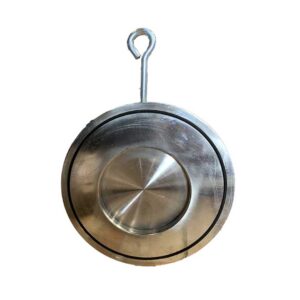Plunger Valves
Plunger valves control fluid flow using a plunger mechanism. When the plunger is raised, the valve opens, allowing fluid to pass through. When lowered, the valve closes, regulating or stopping the flow. Commonly used in various applications for precise control and on/off functions.
Additional information
| Material Construction | Cast Iron, Cast Steel, Ductile Iron, Stainless Steel |
|---|---|
| Class | Up to PN-20 |
| Size (mm) | Up To 2000 |
| Operation | Hydraulic Operated |
A plunger valve is a type of flow control device widely used in various industrial applications, plumbing systems, and hydraulic systems. It is designed to regulate the flow of fluids, such as liquids or gases, by utilizing a cylindrical or conical plunger that moves back and forth within a valve body.
The basic structure of a plunger valve consists of a valve body, which houses the plunger, and an actuator mechanism that controls the movement of the plunger. The plunger, typically made of durable materials such as stainless steel or hardened rubber, is positioned inside the valve body in such a way that it can be moved linearly to open or close the valve.
One of the key advantages of plunger valves is their simplicity and reliability. The linear motion of the plunger allows for precise control over the flow rate, making them suitable for applications where accurate regulation of fluid flow is crucial. Additionally, the straightforward design of plunger valves minimizes the risk of mechanical failure, resulting in a long service life and reduced maintenance requirements.
Plunger valves find extensive use in a variety of industries, including chemical processing, water treatment, oil and gas, pharmaceuticals, and manufacturing. Their robust construction makes them well-suited for handling corrosive or abrasive fluids, and they can be customized with different materials and coatings to withstand challenging operating conditions.
The actuator mechanism of a plunger valve can be manual, pneumatic, hydraulic, or electric, depending on the specific application requirements. This flexibility in actuation allows for integration into automated systems or remote control setups, enhancing efficiency and convenience in industrial processes.
In terms of application, plunger valves are commonly employed in tasks such as throttling, isolating, or diverting fluid flow. Their ability to provide precise control over flow rates makes them essential in processes where maintaining specific conditions is crucial for product quality or system performance.
Overall, plunger valves play a vital role in fluid control systems, offering a reliable and efficient solution for a wide range of industrial applications. Their versatility, durability, and ease of maintenance contribute to their widespread use in diverse sectors where fluid flow regulation is a critical aspect of operational success.





